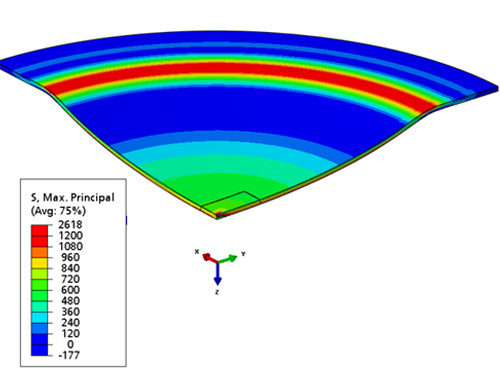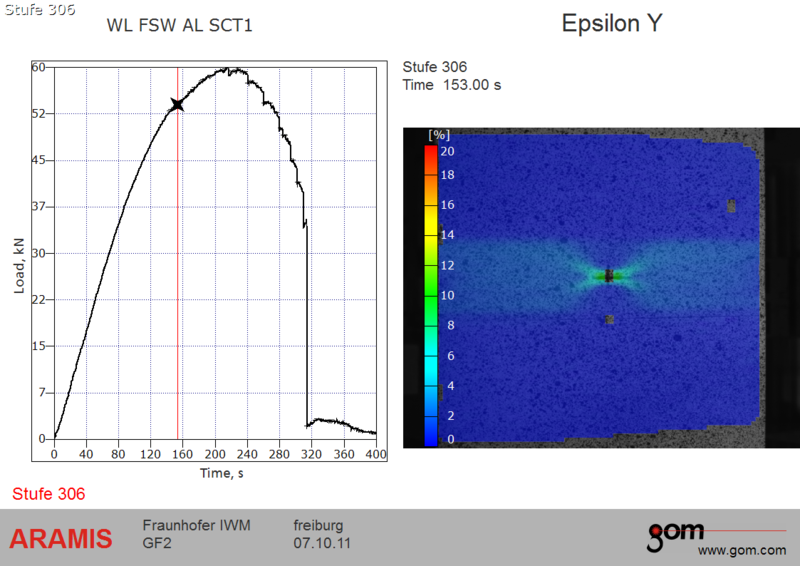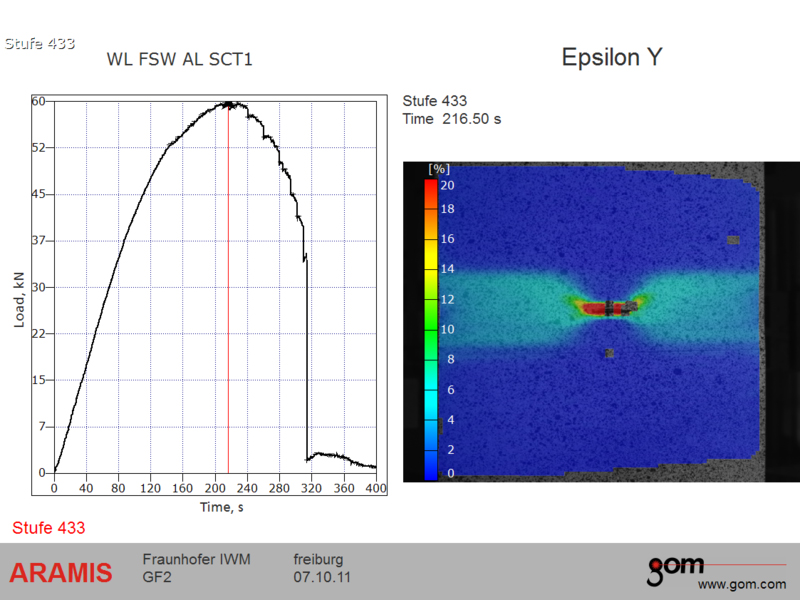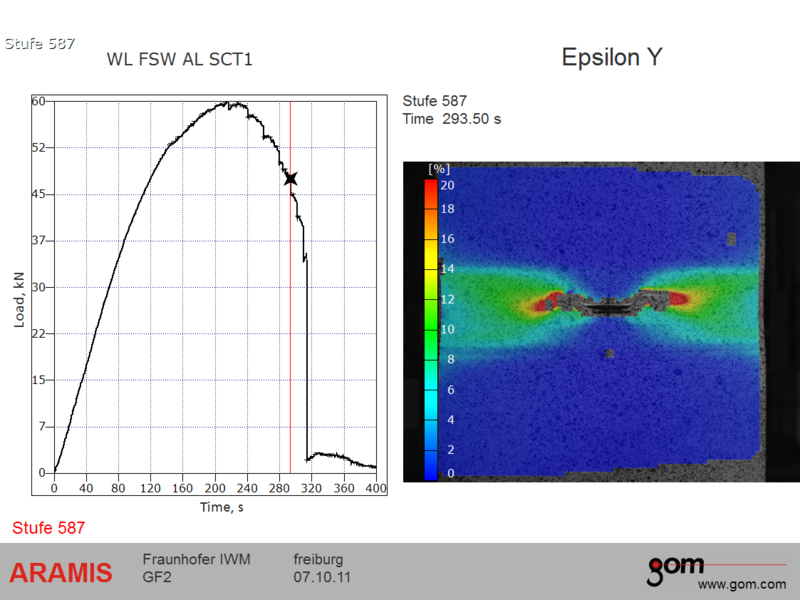Fracture mechanics assessment according to the concept of the Failure Assessment Diagram FAD requires precise calculation methods for the determination of fracture mechanics load parameters and also experimental and numerical validation of the assessment concept. The FAD concept as a part of different technical codes was mainly validated for ferritic steels. Therefore, the use of this concept for other metals involves uncertainties. Within the framework of the program ESA-TRP “Structural Integrity of Pressurized Structures − Advanced Non-Linear Methodology”, the failure of thin-walled components made of aluminium and titanium alloys and their welds was in the focus of the investigations.
Realistic fracture mechanic parameters for crack initiation and stable crack growth, so called crack resistance curves, could be determined for plate materials Ti-6Al-4V and Al2219-T87 with thicknesses between approximately 1 mm to 6 mm, by a test series of pre-cracked specimens applying accompanying optical strain measurements and their numerical simulation. A subsequent analytical failure assessment based on the FAD concept in combination with experimentally determined material parameters provides conservative results. Especially for the ductile aluminium alloy Al2219-T87 and their friction stir welding joints, the failure load will be significantly underestimated. To improve the accuracy of the analytical assessment methods, a correction of the plastic limit load for multiaxial loading, an alternative definition of the cut-off criterion and a strain-based method as an alternative to the mismatch option of the FAD have been proposed.
 Fraunhofer Institute for Mechanics of Materials IWM
Fraunhofer Institute for Mechanics of Materials IWM


